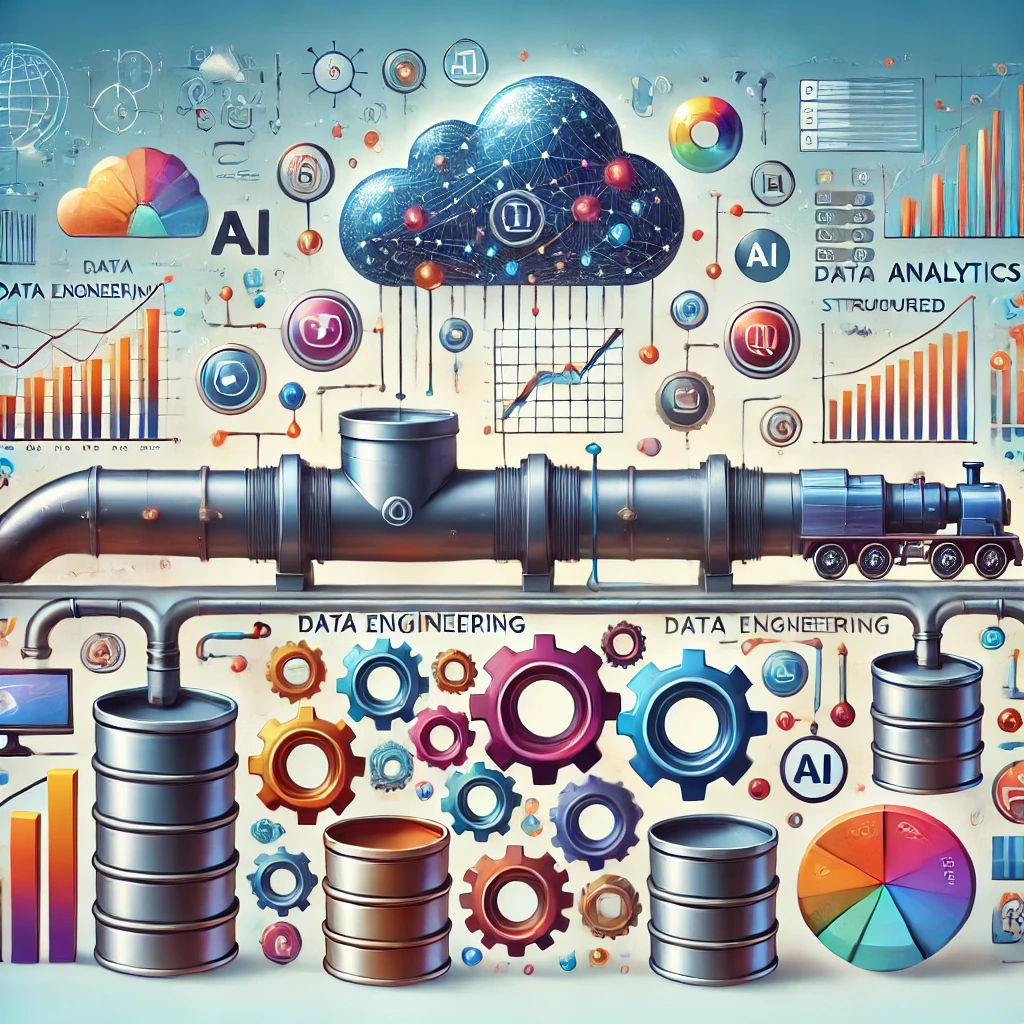
Many people believe that data science is the “sexiest job of the 21st century” and a highly desirable profession in today’s world. Because of this misconception, many established businesses turn to analytics in the hopes of gaining immediate, actionable insights. However, the truth usually tells a different story, with data engineering at its core being where innovation begins, rather than advanced analytics.
The Hidden Challenges of Data Analytics
Data that is fragmented, inconsistent, and unstructured are common problems that arise when trying to obtain insights driven by data. Businesses with a strong technological foundation have an advantage over more traditional organizations when it comes to starting analytical projects because the latter often have trouble with legacy data systems.
Not one, but three major issues often emerge:
- Data Access Inconsistency: Data is often shared across different teams or departments, and each of these groups has its own data management policies and procedures. Access to data may become inconsistent because of this. There may be considerable holdup in data access due to miscommunication between these teams.
- Data Security and Privacy Issues: Companies in highly regulated fields, like banking or manufacturing, must follow all data privacy regulations to the letter. These kinds of compliance requirements usually necessitate extensive masking and anonymization processes.
- Variety of Data Formats: It is common for analytics projects to encounter a wide variety of data formats, including CSV, JSON, SQLite, and others. To seamlessly integrate these different formats, strong data engineering practices and specialized knowledge are required.
Data Engineering: The Foundation of Analytics Success
The backbone of any effective analytics application is a dependable and efficient data engineering system. Insightful dashboards, predictive models, and AI solutions can only be useful if clean, reliable, and integrated data is first prepared.
Successful data engineering allows one to achieve:
- Enhanced Data Consistency: Analysts can trust and confidently use the data for making decisions that significantly impact the organization because standardized data pipelines ensure reliable data consistency.
- Enhanced Efficiency: Analytics processes are accelerated by automating data pipelines, which drastically decrease the amount of manual labor needed for data cleaning, transformation, and integration. As a result, productivity goes up.
- Scalable Data Infrastructure: The ability to manage increasing data volumes with ease and no degradation in performance is made possible through data engineering, which entails establishing the framework for scalable infrastructure.
Data Engineering as an Innovation Catalyst
The key to innovation lies in data engineering. Analytics projects can hit a wall or crash and burn if proper data engineering techniques are not implemented. Skilled data engineers unite disparate datasets into actionable intelligence, closing the data gap between collection and analysis.
Data engineering should be a top investment for companies aiming for data-driven transformation. This paves the way for analytics maturity to increase quickly and steadily while also simplifying analytics projects.
Why Analysts Need Engineering Skills
Data analysts can’t just use Excel or simple SQL anymore. They need to use more modern tools. People need to be better at using technology because data analytics is changing. Analysts should now know core programming languages and frameworks like Python, Scala, and Java.
Analysts who have been trained in engineering can help with:
- Better collaboration: Bridging the gap between technical teams (engineers) and business teams (management) makes it easier to talk to each other and complete projects more quickly.
- Quick Troubleshooting: You can cut down on downtime in analytics workflows by a large amount if you can quickly find, diagnose, and fix problems with data.
- Versatility and Efficiency: Analysts who know how to use both engineering and analytics tools are highly sought after because they have a wide range of skills. The name for these types of analysts is “full-stack” analysts.
Becoming a Full-Stack Analyst: The Competitive Advantage
Specialization is important, but more and more people in the industry are talking about how great it is to be a “full-stack” analyst. Analysts can do more end-to-end analytics work on their own if they learn backend technologies like Kafka, Spark, and Hive as well as frontend technologies like Java and JavaScript. This versatility not only helps people move up in their careers faster, but it also makes analytics teams much more efficient.
If analysts want to get good at all parts of the data stack, they should work on:
- Programming Languages: Learn a programming language, like Python, Java, or Scala.
- Frameworks for processing data: Apache Spark and Apache Kafka are two popular frameworks for processing data.
- Database and Storage: Learn about NoSQL systems like MongoDB and Hive as well as SQL databases.
- Cloud Infrastructure: putting in place scalable data solutions with AWS or Azure.
Final Thoughts
It’s impossible to overstate how important data engineering is in today’s analytics. For businesses that want to use data to come up with new ideas, the first thing they need to do is make sure their data engineering practices are strong and can be expanded. It’s very important for data analysts to learn engineering skills if they want to make a difference in the fast-paced analytics field and be successful.
Setting up a strong data engineering foundation will lead to both valuable analytics insights and long-term company growth.
Learn more about data architecture in posts like this one at https://manasjain.com/data-archi-talks-blogs/

